If you’re like most DIYers, you have probably asked yourself, “Can You Use a 10-Inch Blade on a 12-Inch Miter Saw?” Fortunately, we have the answer for you! In this article, we will provide all of the details you need to know about using a 10-inch blade with a 12-inch miter saw as well as some useful tips to help you maximize your project’s success. So whether you’re an amateur DIYer or a professional carpenter, our comprehensive guide will provide all of the information you need to make the right decision when it comes to miter saws and blades.
What is a Miter Saw?
It typically consists of an adjustable circular blade mounted on an adjustable arm that swings up and down, as well as a fence to guide the material being cut. A miter saw is one of the most important tools in any carpenter’s workshop, which makes it essential for anyone who needs to make accurate angled cuts in wood or other materials.
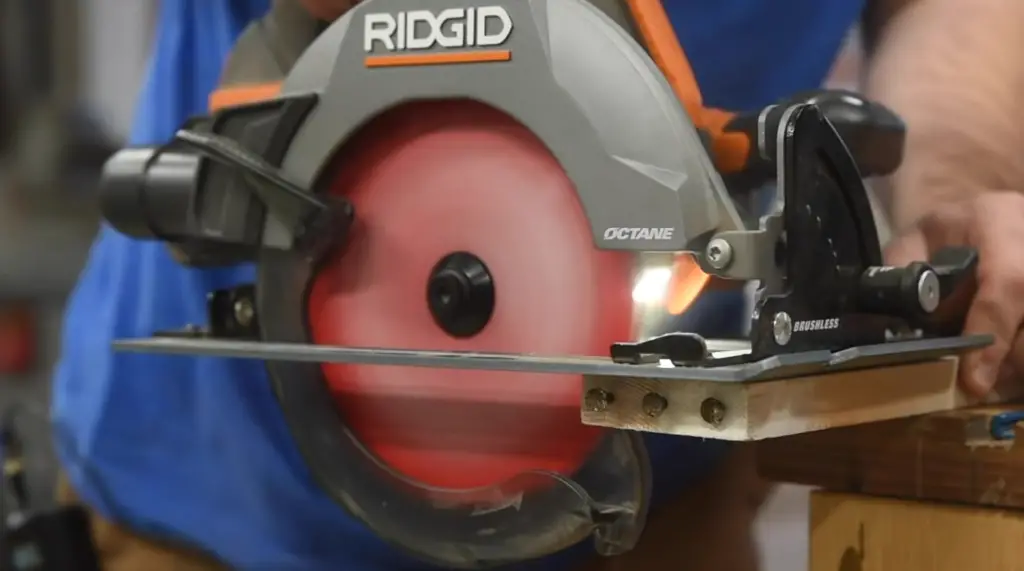
The best use of a miter saw is when making frames, trim work, door casings and crown molding. In addition to its common uses in carpentry and framing, it can also be used for projects such as countertops and deck building. With the right blades, a miter saw can make angled cuts, bevels and even compound angles.
The most popular type of miter saw is the standard or compound miter saw. This has an adjustable blade that can be tilted to either side for making angled cuts. It also has a fence connected to the arm, which allows the material being cut to slide along a straight line as it’s cut by the blade. The other types of miter saws include sliding, dual compound and radial arm saws. Each one has its own unique features and benefits, so you will need to decide which one is best suited for your project needs before purchasing. [1], [2]
Does the Size of the Miter Saw Blade Matter?
The size of the miter saw blade you choose will drastically affect the type of cuts that you can make with your miter saw. A larger blade allows for deeper and wider cuts, while smaller blades are suitable for making thinner and more precise cuts. When choosing a miter saw blade, consider what types of projects you plan to use your miter saw for as well as the thicknesses of the materials you’ll be cutting.
For most general woodworking projects, a 10-inch blade is often sufficient. This type of blade is good for making accurate crosscuts in both hardwood and softwood boards up to 2 inches thick. If you’re working with thicker pieces, then a 12-inch or larger blade may be necessary. These blades are capable of making deep cuts, great for cutting thick lumber or large sheets of plywood.
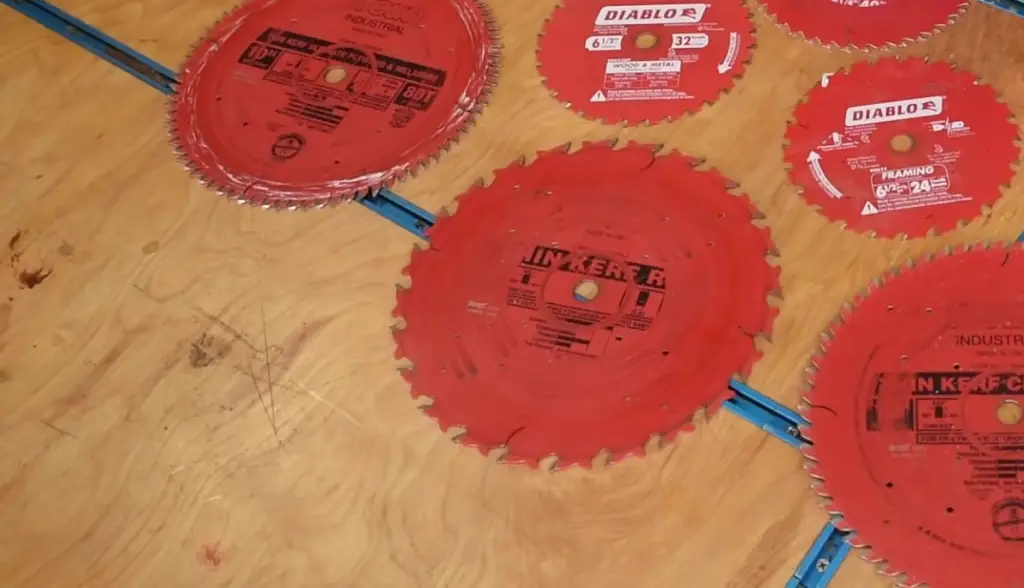
Even if you’re only working with relatively thin materials, such as trim, a smaller blade may still be beneficial. A 7-1/4 inch blade is ideal for making precise and intricate miter cuts in crown molding, baseboards, and other small pieces. The narrow kerf of these blades also helps reduce material waste when cutting thinner boards.
When choosing the right blade size for your miter saw project needs, it’s important to keep in mind that the larger the blade size, the more power your miter saw will need to drive it properly. Selecting a blade that is too large for your saw may lead to overworking the motor and ultimately result in unnecessary wear and tear on the tool. [1], [2]
Can I Put a 10 Inch Saw Blade on a 12 Inch Miter Saw?
One of the most common questions people have about miter saws is whether or not you can use a 10 inch blade on a 12 inch miter saw. The answer to this question is yes, it is possible to use a 10 inch blade on a 12 inch miter saw!
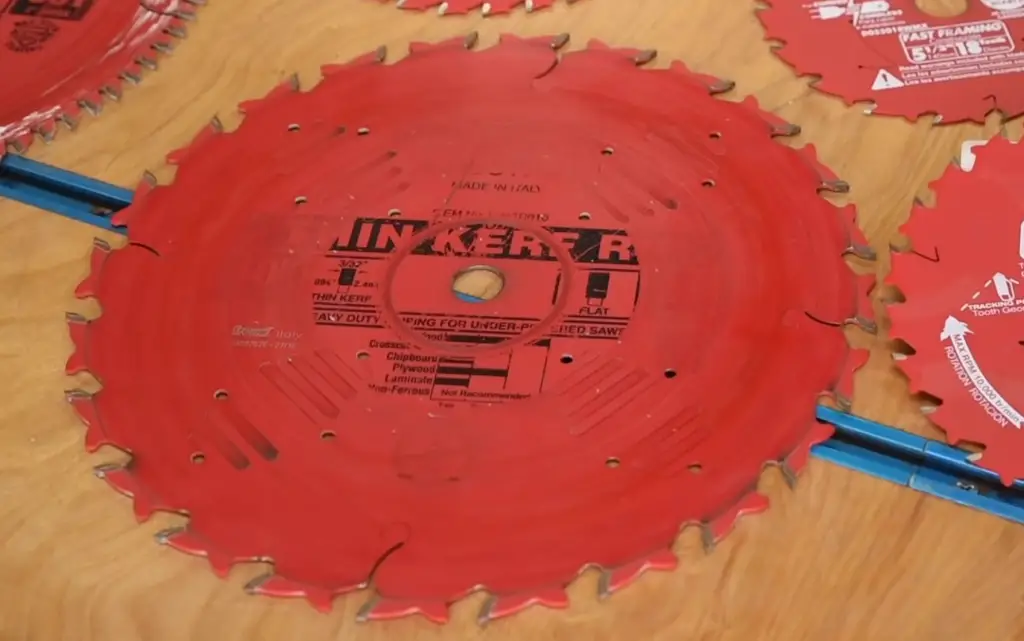
The 12 inch miter saw is large enough to accommodate the 10 inch blade and has enough power to drive it properly. It could be in issue if you needed a 12-inch blade and had only a 10-inch blade, because the depth of cut would be limited. However, using a 10-inch blade on a 12-inch saw isn’t going to cause any problems with power or stability.
When it comes to safety, having the right sized blade is essential. The size of the saw must match up with the correct diameter of the blade in order for it to properly fit and spin correctly. This is critically important when making cuts that require precision and accuracy – such as miter cuts, bevels and compound cuts – where even the smallest discrepancy could lead to inaccurate results or potentially dangerous situations.
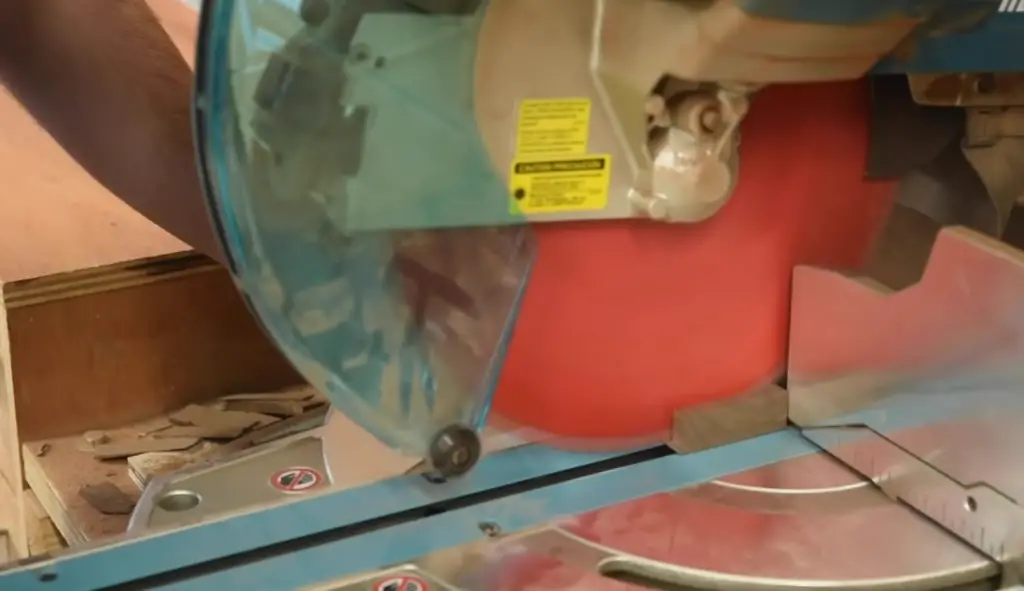
Still, a caution is needed since a smaller blade won’t be secured properly on the larger arbor of a 12-inch miter saw, which could be unsafe. For this reason, make sure to use a blade stabilizing device when using a 10-inch saw blade with a 12-inch miter saw. This will help ensure that the saw and the blade are both securely mounted for maximum safety. [1], [2]
FAQ
What is the difference between a miter and a circular saw?
Miter and circular saws are two different types of power saws that are commonly used in woodworking. A miter saw is a type of saw with a blade mounted on an arm that can pivot left and right to make angled cuts, while a circular saw has a blade mounted on a motor that rotates around a fixed axis.
Miter saws are generally used for making precise crosscuts, mitered cuts and compound mitered cuts in wood or other materials, such as plastic or metal.
They come in sizes ranging from 8-inch to 12-inch blades, and these blades typically have teeth that are set at an angle so they cut material along the grain lines. On the other hand, circular saws are usually used for making long rip cuts, or cuts along the grain lines of a board. Circular saws come in sizes ranging from 4-inch to 16-inch blades, and these blades have teeth that are set in a straight line so they cut material across the grain lines.
How to find which blades can my miter saw support?
The first step in determining whether you can use a 10-inch blade on a 12-inch miter saw is to review the manual of your particular saw. The manual provides detailed specifications and instructions for your tool and should list which blades are compatible with it. If you don’t have the manual anymore, check the maker’s website for a copy of the manual or contact their customer service to ask about blade compatibility.
You should also inspect the saw itself to identify any safety features that might prevent you from using a large enough blade. Some miter saws have guards that cover part of the lower portion of the blade – if this is true for your model, be sure to double check that your 10-inch blade is small enough to clear the guard before continuing.
Can you use different size blades on the miter saw?
Yes, it is possible to use different size blades on a miter saw. The most common size for a miter saw blade is 10 inches, however you can also purchase 12-inch blades. In fact, some models of miter saws come with both sizes so you can switch between the two depending on your project.
When using additional sized blades, it is important to make sure that they are compatible with your miter saw model. For example, if you have a 10-inch blade installed and then try to install a 12-inch blade without checking compatibility first, there’s a chance that the new blade may not fit correctly or worse yet – cause damage to the saw itself.
When using a larger blade on a smaller miter saw, it is also important to note that the motor may not be able to support the increased load and could potentially overheat or burn out. Always refer to the user manual for your miter saw model and consult with an experienced woodworker if you’re unsure about how best to proceed. Additionally, keep in mind that when using larger blades they tend to cause more friction which can reduce accuracy and make cutting slower going.
Can I put a 10-inch blade on a 12-inch table saw?
The short answer is yes, you can generally put a 10-inch blade on a 12-inch miter saw. However, it’s important to understand the reasons why and when it might be appropriate.
Generally speaking, a 12-inch blade has enough space to accommodate a 10-inch blade, as long as it can be secured properly. This is because the arbor (or shaft) of the saw is larger than the size of the blade itself. So, if your saw has an arbor which is 1/2 inch or 5/8 inch wide, then you should be able to fit a 10-inch blade onto it.
On the flip side, if you are using a miter saw primarily for large rip cuts on thicker or wider material, then a 12-inch blade would be the better option as it’s designed to cut through tougher materials with more power and efficiency.
Don’t forget to keep safety in mind when making any changes to your miter saw, such as changing blades. Always make sure that the blade is properly secured and tightened before operating the saw.
What is the difference between a 10 and a 12 miter saw?
The primary difference between a 10 and 12 inch miter saw is the size of its blade. A 10-inch miter saw has a blade that is 10 inches in diameter, whereas a 12-inch miter saw has a blade that is 12 inches in diameter. This means that with a larger blade, the 12-inch miter saw can make deeper cuts than the 10-inch model. Additionally, because of the larger size, it requires more power to run than its smaller counterpart. This is something to keep in mind when deciding which miter saw is best for your needs.
Can a 10-inch miter saw cut a 2×12?
The short answer is yes, a 10-inch blade on a 12-inch miter saw can cut most 2×12 boards. However, before attempting this project it is important to consider the type of material you are cutting and the type of cut you need to make.
You also need to understand that the max depth will be around 4-6 inches depending on the specific miter saw you are using. This means that if you need to cut a thicker board, such as a 4×4 or 6×6, then it is better to use a larger blade size.
When cutting lumber with a 10-inch blade, make sure that you have good alignment between the material and your saw’s fence. Additionally, take extra care when making bevel cuts as the smaller blade can cause ragged edges if not properly aligned.
Useful Video: Picking Circular Saw Blades | Table Saw | Miter Saw
Conclusion
Miter saws are a great tool for making precise cuts and getting the job done quickly. While it is possible to use a 10-inch blade on a 12-inch miter saw, this is not recommended unless you absolutely need to. Due to the size difference, using a 10-inch blade can result in decreased performance, slower cutting speeds, and less accuracy than if you were to use a 12-inch blade.
You also need to experience extreme caution when using a 10-inch blade on a 12-inch miter saw. Not only is there a risk of the blade slipping or moving while cutting, but this can also cause more vibration and kickback. If you are looking to make precise cuts and want the most accurate results, it is best to stick with a 12-inch blade for your 12-inch miter saw.
When purchasing blades for your miter saw, always make sure to choose the right size by checking the specifications of both your saw and blade before making any purchases. This will ensure that you get maximum cutting power from your saw as well as optimal safety throughout your projects. By following these tips, you can be confident that your miter saw will provide you with the best possible results for all your projects. Happy sewing!
References
- https://99powertools.com/10-blade-on-12-miter-saw/
- https://cedarfaq.com/can-you-use-a-10-inch-blade-on-a-12-inch-miter-saw/






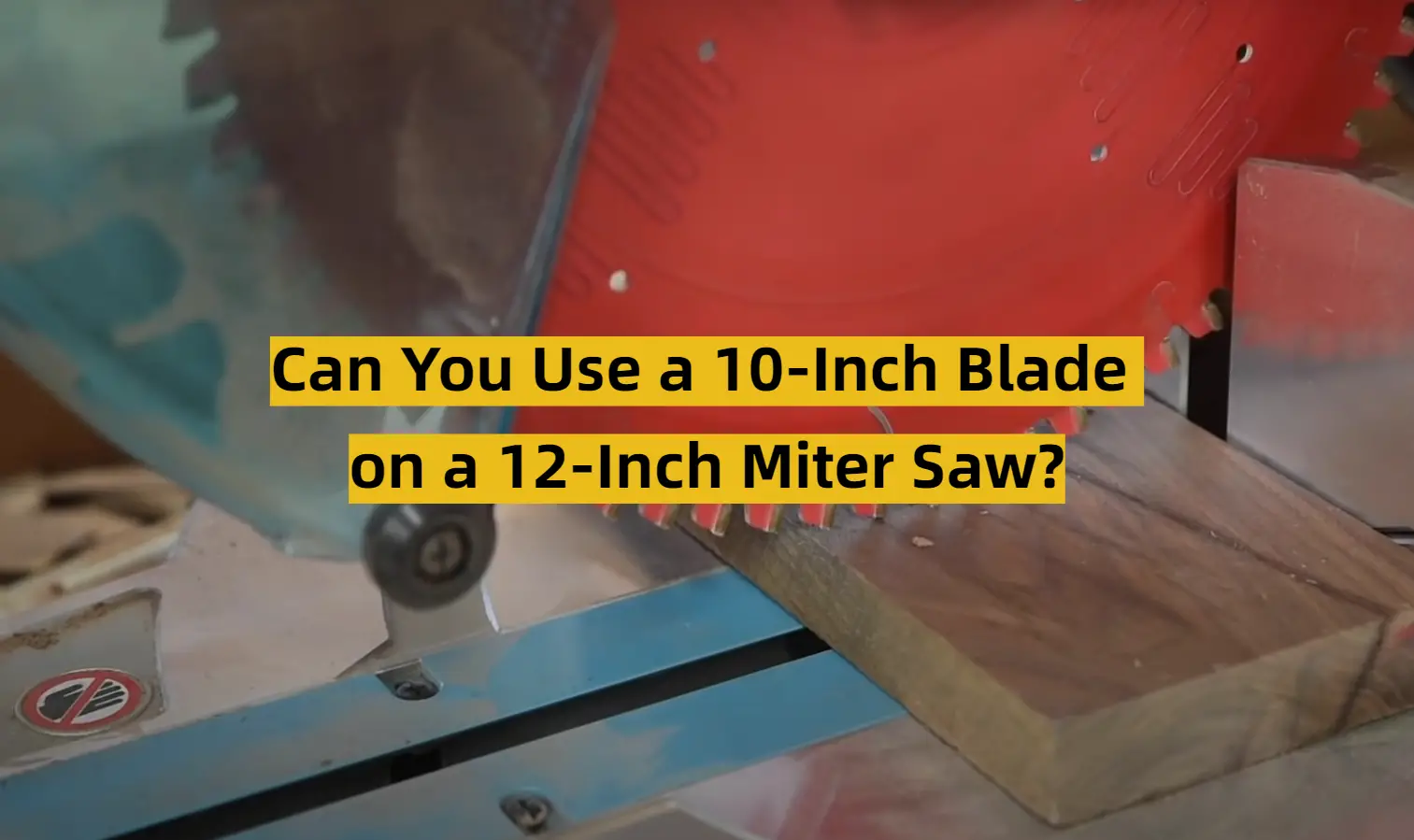




Leave a Reply